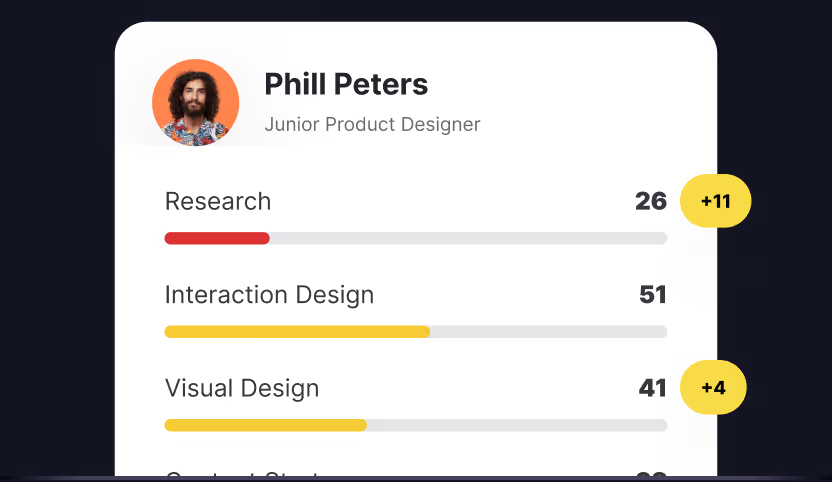
Hiring a UX designer is a multi-step process.
It involves defining what you’re looking for, sourcing candidates, interviewing promising profiles, and hiring the best UX designer for the job. It’s a time-consuming process—one that culminates in onboarding your new UX designer to your team and company.
In this article, we’re covering this final step: UX designer onboarding. We’ve compiled eight top tips to ensure your new hire acclimates quickly and easily to their new role—helping them to start creating impact from the get-go.
Let’s dive straight in.
1. Audit the existing onboarding experience
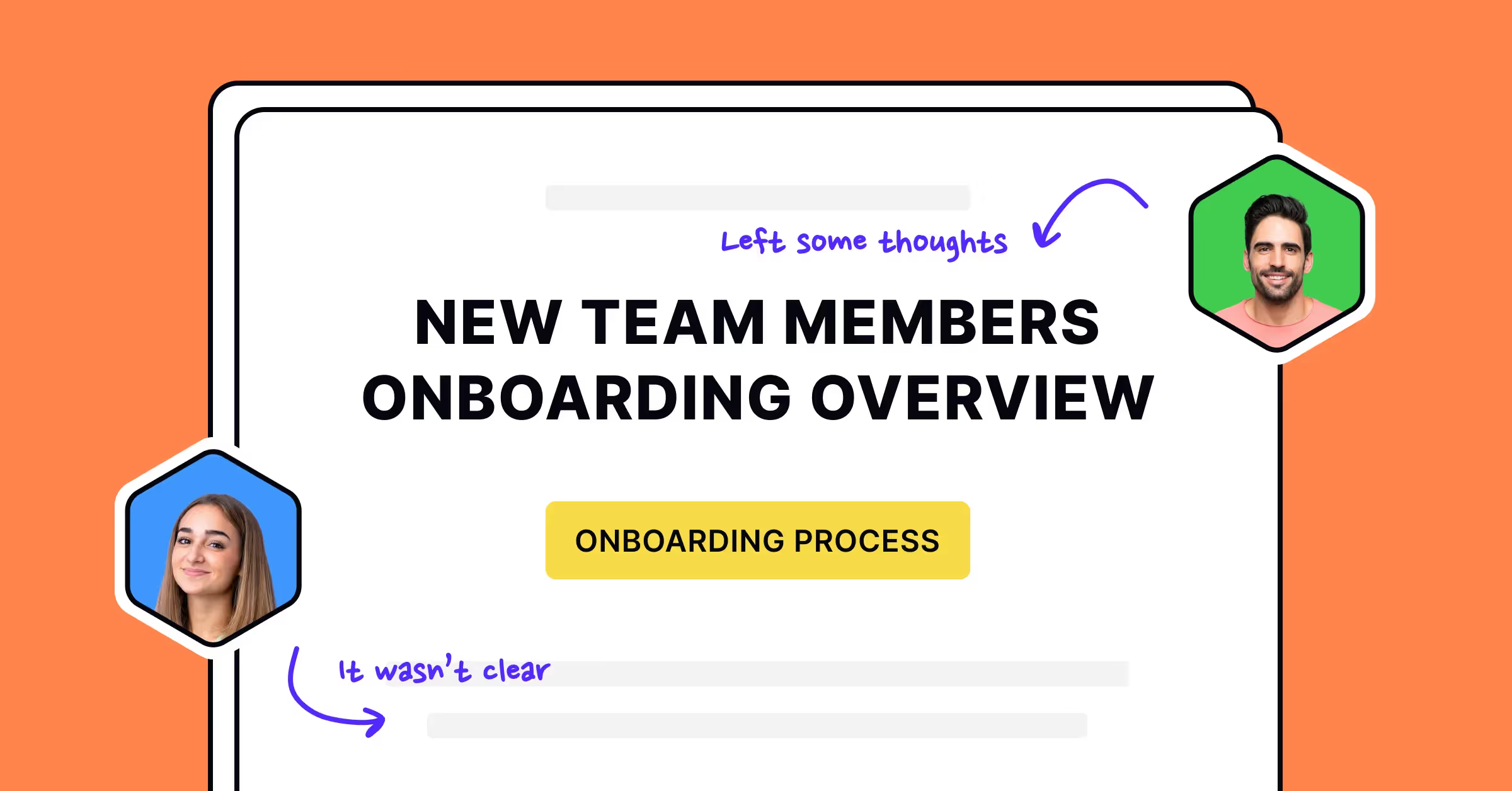
The first tip for onboarding UX designers is to audit the onboarding experience at your company. This involves talking with team members who’ve recently been onboarded to discuss how they found the process. They’ll likely have some insight into what’s helpful, and what can be improved.
Ask them about their first few days, weeks, and months with your company to find out what they found most useful during their onboarding process. Was it the documentation provided? Was it talking with other team members?
Just as important as what works is what doesn’t—invite them to be honest about what they thought was lacking from their onboarding experience. It’s essential to stress that any feedback is useful, and that you want to hear the bad bits in order to improve on them.
This analysis of the onboarding process will help ensure you fill any information gaps and develop onboarding documentation that’s actually useful. Learning from previous mistakes is crucial for improvement.
2. Map out their first days, weeks, and months
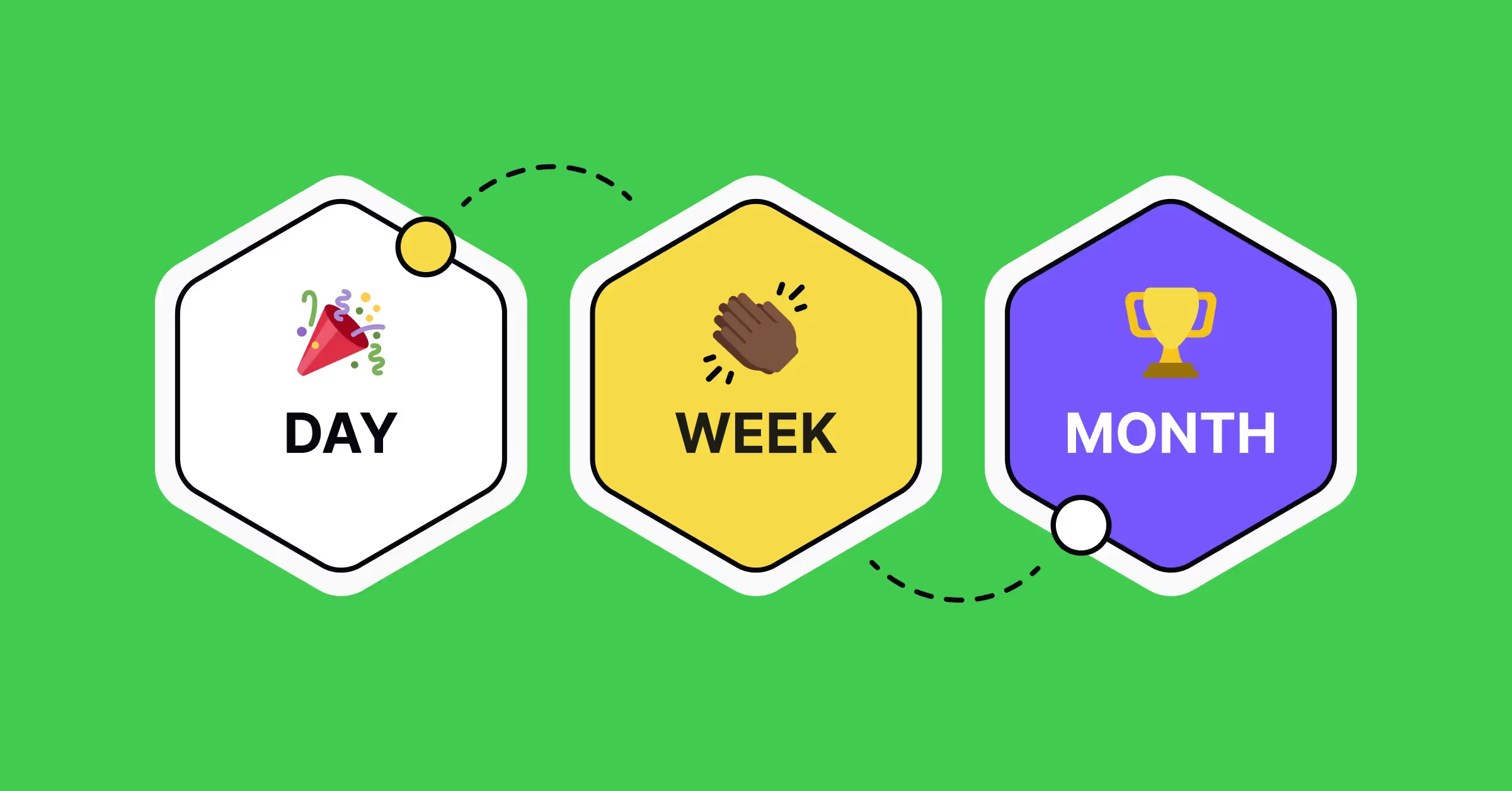
Give your new UX designer an idea of what they can expect during their first days, weeks, and months at your company. This provides the structure that some onboarding processes often lack, and enables the new hire to get a glimpse of what they can expect from the first few months with you.
This doesn’t need to be super specific or exact — especially when talking about plans for the next few months. You can stress that this is a preliminary plan that’s subject to change, but that this is what they’ll likely be working on.
The first few days at your company will mainly focus on getting them comfortable in their role and with the organization. The first few weeks will get them working on smaller projects with the team and your UX tools, and the first few months is when they’ll start working on larger-scale UX projects—the ones you hired them for.
It’s tempting to get your new UX designer on bigger projects from the get-go—but it’s typically not your best option. Of course, a new hire might be ready sooner than you expect—but give them the space to settle in and take it from there.
3. Give your new hire some easy wins

The first week at a new organization can be pretty daunting, no matter what role a new hire is stepping into. According to research into new-job jitters, the biggest concern for new hires is that they won’t be good at their job quickly enough. Help your new hire fight imposter syndrome by giving them some quick, easy wins.
These simple tasks help them build confidence and gain credibility within your organization—enabling them to feel like a valuable member of your team from the start.
These quick wins should be high-impact actions that don’t require in-depth knowledge of your organization. For example, you could get them to audit the UX of your website to identify any possible improvements or friction points.
4. Assign them a ‘buddy’

It’s a good idea to assign your new hire with a team buddy — ideally someone who’s been in their situation not too long ago. This gives your new hire someone to turn to when they’re unsure about something and helps them with their integration into the wider team.
The new hire’s buddy should be someone on their team — but if that’s not possible, find another employee that’s recently undergone the onboarding process. They can help them feel less isolated during the first days and weeks of their new role, and they can provide them with experience-based guidance and support.
It’s also important to consider the impact this will have on the buddy. If you want it to be a genuinely positive and useful experience, make sure to reduce the buddy’s workload in line with their new responsibility. If the buddy experience does nothing but increase your team’s stress and workload, it’ll likely be unsuccessful—and could lead to some resentment towards the new hire.
Make sure you clearly communicate what’s expected of a buddy, and ensure they’re able to fulfill those responsibilities by adjusting their workload accordingly.
5. Introduce them to the tools they need
UX designers will need to work with a variety of tools to get the job done, but they may not have experience with all these tools.
You likely listed them on your job description and discussed proficiency during the interview stage — but there’s still likely one or two tools that your new hire needs to pick up. Plus, just because they’ve got experience with a UX tool, doesn’t mean they have experience with how you use it.
Your new hire will need to spend some time during the onboarding process to get to grips with the UX tools your organization uses. They’ll also likely need to get comfortable with the other tools your team uses—such as project management tools, communication tools, and more.
Want to help your new hire assess their existing skills and monitor their progress? Check out Uxcel’s skill assessments—including tool tests for Figma, and more.
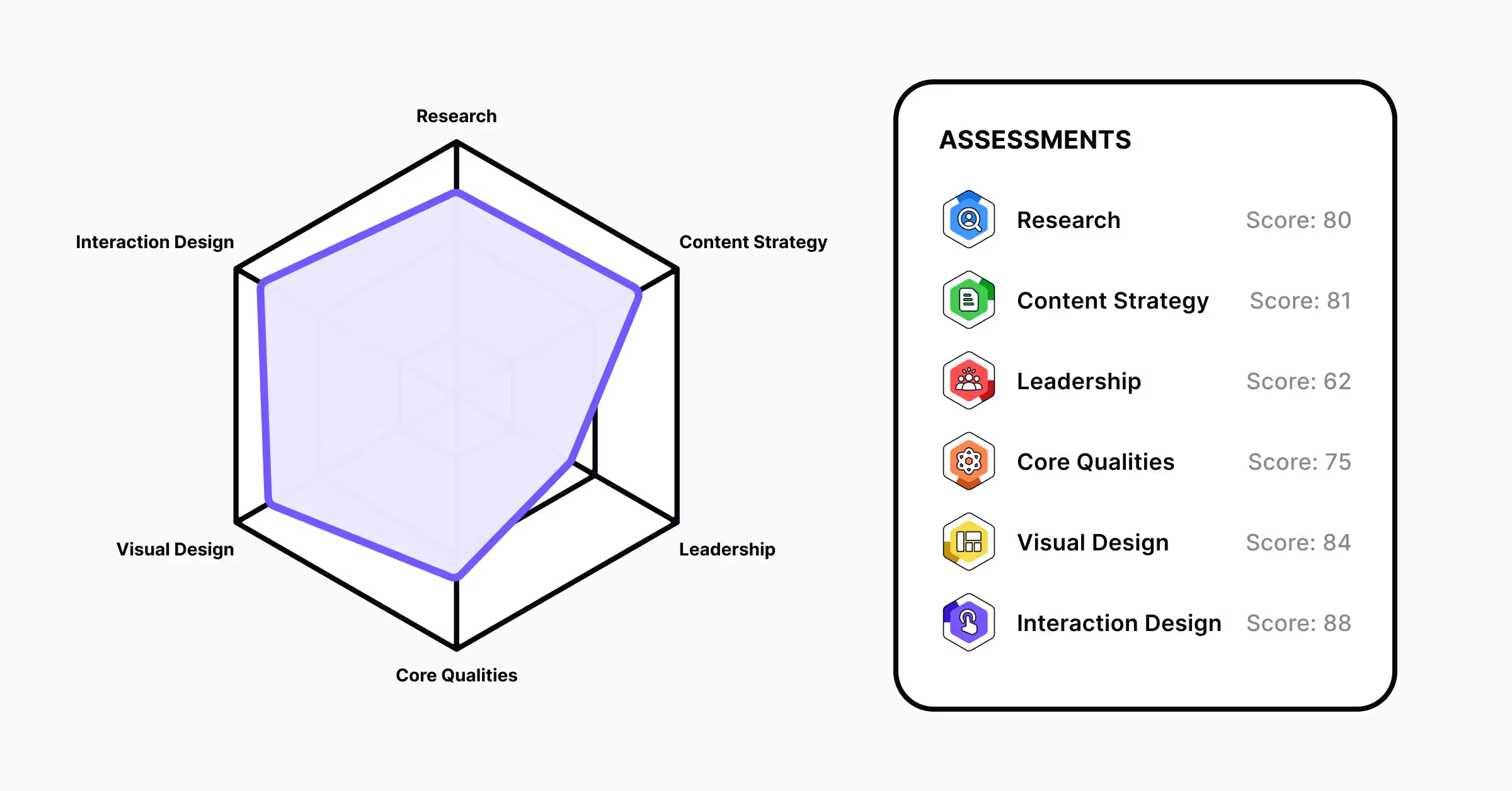
6. Connect them with the team
The biggest worry for 32% of surveyed professionals is that their colleagues, UX management, and/or boss won’t like them. You can help put that worry to rest by proactively connecting them with the rest of your team. This is a little trickier when managing a remote team, but it’s just as important.
Before your new hire arrives, make sure the rest of your team knows they’re incoming. Let them know you’ve hired a new UX designer, and share that new hire’s role and responsibilities. This way, they know to expect a new face around the (potentially virtual) office.
You could get your new UX designer to create a brief profile during the first few days of their onboarding. Let them know that this will be shared with the team as an introduction. This profile should cover what they do at the organization, as well as some personal information to help them form workplace connections. This could include their interests, hobbies, and more.
Your new designer also needs to know who to contact for what—for example, who to turn to when requesting time off or who to reach out to with tech issues. In a bigger organization, make sure your new designer connects with the:
- HR Manager
- Product Owner
- QA Engineers
- Developers
- Design Team
- IT Department
That way, they know who to turn to with what.
Your new hire’s buddy will play a large part in connecting them with the rest of the team—both professionally and personally. Much of the professional contact information should be included in the onboarding documentation—but the buddy is on hand to clear up any confusion.
7. Create an onboarding checklist
This is where you’ll formalize a lot of the tips outlined above into a neat, interactive checklist. Giving new UX designers a clear understanding of their priorities and tasks during their first step with your organization is key. It helps them hit the ground running and enables them to map out their first few days and weeks on your team.
You can separate your checklist by days or weeks, but it’s best not to put tasks in a strict order or timeframe. Give new UX designers the freedom to complete tasks at their own pace.
Here’s an example of what your checklist could look like:
First day:
- Activate your accounts with your login details
- Your company email is johnappleseed@XYZ.com and your password is PaSSworD321.
- Download all the necessary software
- This includes Figma, Adobe XD, Slack, Zoom, and Sketch.
- Set your accounts up with your name and a profile picture
- Connect with your buddy
- They’ll come to you, but think about what you might like to ask them!
- Write a bio to be charred with the team
First week:
- Start familiarizing yourself with the software we use
- We don’t expect you to be an expert straight away, but the sooner you start the better.
- Grab a (virtual) coffee with your buddy and teammates
- If you’d like to! This is optional (but I promise we’re all really nice).
- Reach out and arrange a meeting with the IT team leader, Marketing team leader, and Product team leader
- Audit the UX of our website
- Take a look at our web pages and compile a list of suggested changes
- Summarize your first week for an EOW catch-up with your manager
First month:
- Connect with the design team to discuss active projects
- Familiarize yourself with our user personas
- They can be found in the design team shared drive.
- Identify insights in our recent user interviews
- These will be shared with you by the design team. They’re interviews conducted to understand the sign-up process undergone by new users.
- Meet with your buddy once a week to chat about your progress and discuss any questions.
- Take a Uxcel Skill Test to identify areas for improvement
- Audit the onboarding experience for an EOM catch-up with your manager.
- What’s worked well for you? What hasn’t worked so well? Is there anything else we could have done to make your first month easier?
You don’t have to include the instructional info on the checklist, but you must have it somewhere. Including it on the checklist just removes friction for your new hire and makes their onboarding process easier.
Providing structure for your new UX designer avoids them feeling like they’ve been thrown in at the deep end. They don’t need their hand held, but it’s essential that they know there’s support if they need it—which leads us to our final tip…
8. Schedule regular check-ins
Make sure your new hire knows when they’ll next be speaking with you. This gives them something to work towards during their first month on your team.
You’ll meet with them on their first day to welcome them and start the onboarding process. This is a good time to schedule the next few meetings. It’s a good idea to catch up at the end of their first week and their first month. These can be more formal catch-ups where you discuss the progress they’ve made in the workplace.
You can also schedule quick check-ins during their first month to make sure they’re getting the support they need. Their buddy will likely have answers to all of their questions, but these check-ins can be useful for connecting with the new hire. Aim to speak with your new hire at least once a week for the first month.
Upskill your design team with Uxcel
Effective and thorough onboarding is crucial—it helps new UX designers acclimate to their new work environment, integrate with the company culture, and reach productivity sooner.
A new UX designer brings a fresh pair of eyes to all of your designs and design workflows—helping to identify issues and opportunities that your team may have missed. However, hiring isn’t the only way to fill the gaps in your existing UX design team.
Uxcel’s team learning platform offers organizations a way to upskill their design team with UX knowledge and skills. It provides effective design education and comprehensive skill tests to help you identify top design talent in your organization.
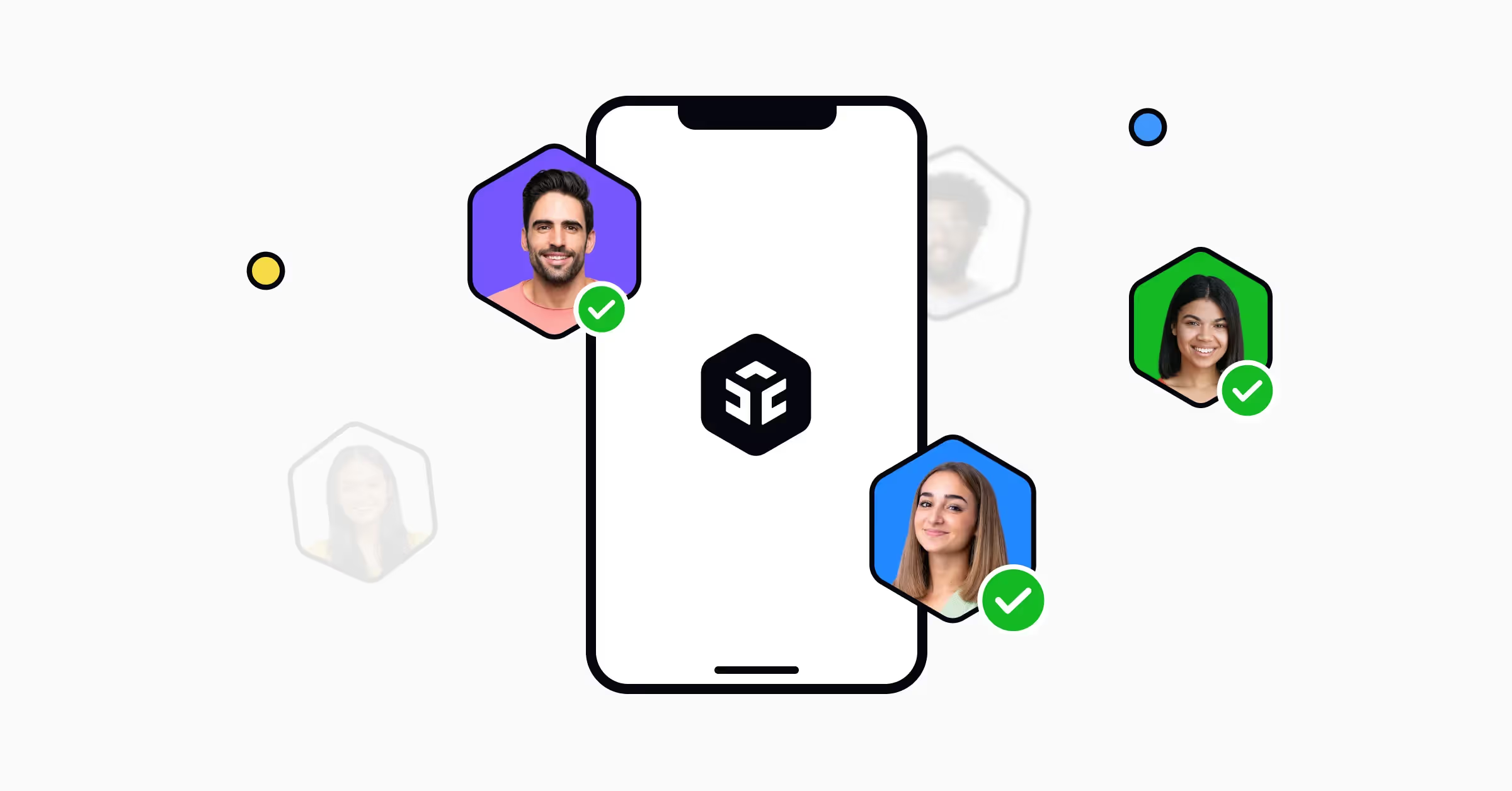
Plus, you get a two-week free trial. What’s not to like?
Sign up today to start upskilling your design team—whether they’ve just joined, or have been with you for years.




